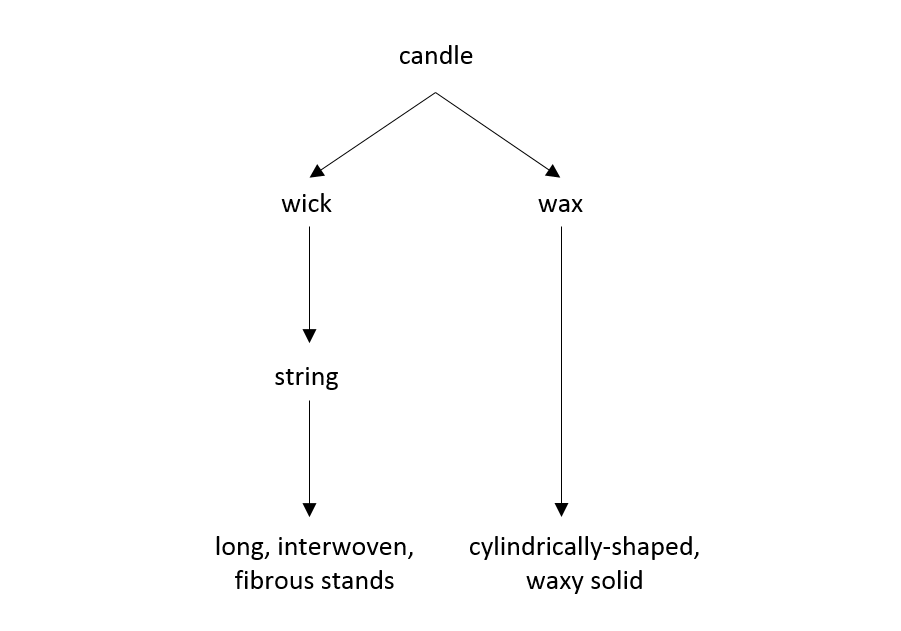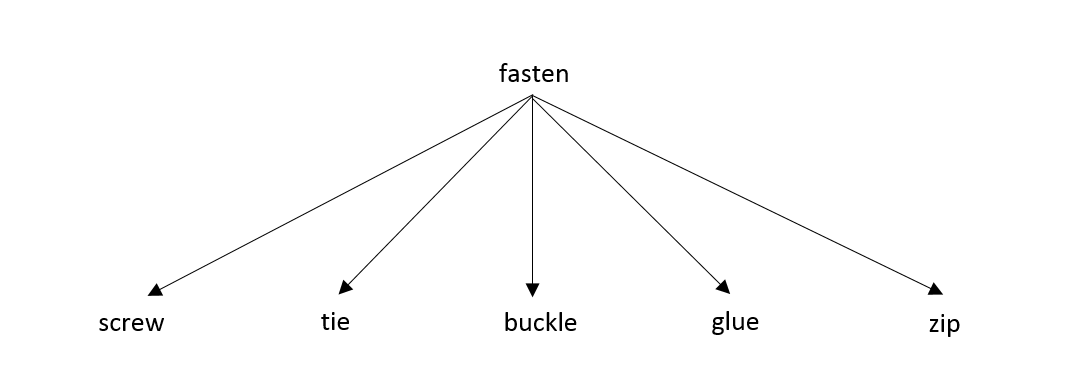
It can be hard to come up with innovative solutions to various problems. Most people assume that being innovative is a fixed personality trait, meaning that you either have it or you don’t. However, research shows that while personality does play a role in innovative ability, innovation is something that can be learned, even by people who think that they have no natural aptitude for it.
As such, in the following article you will first learn about a research-based theory that explains how the innovative process works in many cases, and then see a few simple guidelines that have been shown to successfully help people become more innovative.
The Obscure Features Hypothesis
The Obscure Features Hypothesis for innovation was developed by researchers who examined the thought process behind the development of over one thousand historic inventions. This theory suggests that there is a two-step process that leads to the development of most innovative solutions:
- First, a new or infrequently noticed (i.e. obscure) feature of a problem is discovered.
- Then, this feature is used in order to solve the problem in a novel way.
A classic example of the role of obscure features in the innovation process is the following:
“…consider the two-rings problem, in which the participant has to fasten together two weighty steel rings using only a long candle, a match, and a 2-in. cube of steel…
Melted wax is not strong enough to bond the rings, so the solution relies on noticing that the wick is a string, which can be used to tie the rings together. Once people notice this, they easily devise a way to extricate the wick from the wax (e.g., scrape away the wax on the edge of the cube).”
— From “Innovation Relies on the Obscure: A Key to Overcoming the Classic Problem of Functional Fixedness” (McCaffrey, 2012)
In this example, the obscure feature is the candle’s wick, which people often don’t realize can be separated from the rest of the candle and used a string. Noticing this allows people to realize that the candle’s wick can be to tie the two rings together, which allows them to successfully solve the problem at hand.
Another example of the role of obscure features in innovations appears in a similar brain teaser called the “candle problem”.
In the candle problem, individuals are presented with a candle, a box of matches, a small cardboard box full of thumbtacks, and a corkboard. They are then asked to find a way to connect the candle to the upright corkboard, in a way that allows it to burn without the wax dripping on the table below.
The solution is simple: participants need to first empty the box of thumbtacks, and then use the thumbtacks in order to pin the box to the corkboard. Then, they need to place the candle inside the box, where it can be lit without having the wax drip onto the table.
Essentially, in order to solve the candle problem, people must realize that the box of thumbtacks can serve an additional purpose beyond just holding the thumbtacks, and then realize that they can use it in order to hold the candle too.
The effectiveness of teaching and learning innovation
In addition to explaining how people innovate, the research on the Obscure Features Hypothesis also shows that teaching people to understand this relatively simple innovation process can help them improve their problem-solving skills and become more innovative.
Specifically, a study on the topic examined how well people were able to solve various brain teasers that require creative thinking, such as the two-ring problem and the candle problem, which were described earlier. The researchers found that even a brief training session on how to identify and use obscure features often had a significant impact on people’s innovative ability.
In particular, people who underwent a single 20-minutes training session on the topic, ended up solving, on average, 67% more problems than those who did not undergo such training. This demonstrates how effective this type of training can be, and shows that people can be taught how to be more innovative, even if the creative process isn’t something that they find naturally intuitive.
In the following sections, you will learn the main techniques that the researchers used in order to teach people how to be more creative, and see how you can implement them yourself when you’re trying to find innovative solutions to your problems.
How to become more innovative
As the information on the Obscure Features Hypothesis showed, one of the keys to finding innovative solutions is to identify obscure features that are related to the problem that you’re trying to solve, and then figure out how to use those features in order to solve the problem.
In the section below, you will learn a number of helpful techniques that will help you do this, even if you’re not a naturally creative person.
Learn to overcome functional fixedness
Functional fixedness is the tendency to fixate on a typical use of an object or of its parts. Because this form of thinking can prevent you from considering creative uses for the objects at your disposal, you want to overcome it in order to be more innovative.
One effective way to do this is to construct a generic-parts diagram, which you do by deconstructing each object that you have into its components, and then describing each of these components in-depth while listing their various properties.
For example, a candle can be described using the following generic-parts diagram:

In this generic-parts diagram, we see that there are two main components to a candle: its wick and its wax. Furthermore, we see that the wick is essentially a type of string, which can help you realize that, beyond its original use in the candle, it can also be used to tie things together.
The main advantage of this technique is that it’s simple and easy to implement, even if you’re not a naturally creative person. All you have to do is deconstruct the relevant objects in a thorough but relatively straightforward way, which doesn’t require much creativity in itself, but which can help you identify innovative solutions to your problems.
Learn to overcome narrow verb associations
Narrow verb associations represent people’s tendency to focus on only a limited meaning of a verb—out of its multiple potential meanings—when describing a problem that they are trying to solve, which causes them to unnecessarily limit the range of possible solutions. By learning to overcome these narrow verb associations, you can become more successful at finding new approaches to solving problems that you encounter.
For example, consider the two-rings problem which was discussed earlier, which is a brain teaser where people are told to find a way to fasten two metal rings to each other, using only a long candle, a match, and a small steel cube. In this case, thinking about the various ways in which one can fasten things to each other can help you find the correct solution to the problem (which is to scrape the wax from the candle in order to reveal the wick, and then using the wick to tie the rings together).
In particular, a good way to do this is to create a list of troponyms, which are verbs that describe a specific way of performing a general action that’s described by another verb. Below, you can see some of the troponyms of fasten, which describe the various ways in which things can be fastened:

In the context of the two-rings problem, some of these verbs, such as screw and buckle, can easily be ruled out as irrelevant. However, realizing that the action of fastening can be accomplished by tying things together can help you realize that the candle’s wick is essentially a string which can be used to tie the two rings together.
As such, learning to overcome narrow verb associations, by coming up with a list of troponyms that describe the process that you are trying to perform in various ways, can help you come up with more innovative solutions. As in the case of creating a generic-parts diagram in order to overcome functional fixedness, this too is a relatively straightforward process, that can easily help you improve your creative process, regardless of whether you’re naturally creative or not.
Note that although this technique is used primarily for verbs, it can also be helpful when thinking about other aspects of your problems, by looking at the hyponyms—which are words with a more specific meaning than another word—of relevant nouns, adjectives, or adverbs.
In addition, you don’t have to try and come up with a list of relevant hyponyms yourself, though it can help you think about the problem that you are addressing. Instead, there are many tools that can assist you in this, such as online thesauruses and Princeton’s WordNet project.
Learn to overcome assumption blindness
Assumption blindness is the tendency to develop assumptions—things that you accept as true without proof—in a way that limits your thought process, without being aware that you have done so. Assumption blindness can cause you to miss creative solutions to problems that you encounter, and is often affected by the language that you use to describe a problem.
For example, the researchers who developed the obscure features hypothesis described a case where they were given a previously unsolved problem: how to make a coating adhere to a non-stick Teflon surface. They claimed that one of the reasons why this problem went unsolved was that the use of the verb adhere pushed people to look for a certain type of solution and ignore other viable options.
Specifically, when people heard that the goal of the project is to make the coating adhere to the non-stick surface, they tended to make the following assumptions:
- That “adhere” implies that a chemical process should be used.
- That “adhere” implies that only the two materials being adhered should be involved in the process.
- That “adhere” implies that the direct contact between the coating and the Teflon should cause the adherence.
Because people developed these implicit assumptions, without being aware that they were doing so, they failed to come up with a solution to the problem of making something adhere to a surface that is designed to prevent things from adhering to it.
Accordingly, identifying these assumptions and negating them is what allowed the researchers to find the solution to the problem in this case. Specifically, they decided to construct a three-layered sandwich, where one outer layer contained the special coating and the other outer layer contained a special magnetic surface that caused the coating to adhere to the Teflon, which was in the middle layer.
This demonstrates how being aware of your underlying assumptions can help you be more innovative. As such, when approaching a problem that could benefit from a novel solution, try to identify all your assumptions on the topic, and then question whether those assumptions are valid or not.
Similarly to the process of overcoming functional fixedness and narrow verb associations, this process too is relatively straightforward, and can be performed even by someone without much natural creativity, which is why it’s such an effective tool in the innovation process.
Other techniques for increasing innovation
In addition to the techniques listed above, the obscure features hypothesis suggests other common obstacles to innovation, together with relevant solutions. In particular, there are two other main concepts that you should be aware of:
- Design fixation. Design fixation, in this context, is people’s tendency to focus on features of known solutions when they’re trying to identify features that could be relevant for new solutions. You can avoid design fixation in various ways, such as by asking yourself what sort of infrequently noticed features the objects related to your problem have. Relevant features can include things such as the material that something is made of, its weight, and its shape; different features are considered obscure in different situations.
- Analogy blindness. Analogy blindness, in this context, is people’s tendency to miss the fact that a concept in one domain could be adapted to solve a problem in another domain. Analogy blindness often occurs as a result of being distracted by superficial differences between the two domains, which hinders people’s ability to notice relevant relations at a proper level of abstraction. As such, to avoid design fixation, you can try to think about the problem at hand using a high level of abstraction, by expressing it using general linguistic terms, in order to trigger an association with relevant solutions from other domains. For example, if you were to do this while describing a situation in which scissors were used to cut fabric, you might instead say that a tool was used to divide something.
Innovation isn’t limited to physical objects
Though the examples in this article focus on innovation in the context of solving problems involving physical objects, the Obscure Features Hypothesis and its related techniques can also be applied when it comes to non-physical things. For example, you could potentially use these techniques to help you figure out how to develop more innovative software, or to figure out how to resolve an interpersonal conflict in a more creative and effective manner.
Summary and conclusions
- The Obscure Features Hypothesis suggests that there is a two-step process that leads to the development of most innovative solutions: first, a new or infrequently observed (i.e. obscure) feature of a problem is noticed, and then, this feature is used in order to solve the problem in a novel way.
- For example, in the case of the two-rings problem, where people have to fasten together two steel rings using only a long candle, a match, and a small steel cube, the solution relies on noticing that the candle’s wick is a string, which can be extracted by scraping away the wax using the metal cube, and then used to tie the rings.
- One common obstacle that makes people less likely to identify obscure features is functional fixedness, which is the tendency to fixate on a typical use of an object or of its parts, and which can be overcome by describing the components that make up each of your objects, together with their properties.
- Another common obstacle are narrow verb associations, which represent people’s tendency to focus on limited meanings of verbs when describing a problem that they are trying to solve, and which can be overcome by creating a list of related verbs that describe similar ways of performing the same action as the original verb.
- Finally, another common obstacle is assumption blindness, which is the tendency to develop implicit assumptions in a way that limits our thought process, and which can be overcome by identifying and questioning assumptions that we have.